Just Draw Exhibition
It is imperative to note that numerous galleries are present in this area, and it is not an easy task to select the one that would be liked by children because every single one has art that is unique and worth seeing. Just Draw is an exhibition that is focused on various aspects of paintings. Fifteen Australian artists were selected, and they have an opportunity to demonstrate their works (Woolfe par. 3.). Most of them come from different backgrounds, but an aspect that unites them is devoted to art. Artists utilize numerous techniques to create works that are truly unique and can be easily differentiated from others. Each one has a different style, and it can be seen that they are quite experienced in this area.
The primary goal of this exhibition is to draw attention to Australian artists that have enormous potential. Understandably, some of these names are not yet widely known, but the works that are shown are quite impressive and deserve appreciation. Works by Matilda Michell are worth noting because the works that are presented at an exhibition will be focused on practice and children may get a better understanding of the process of drawing. For instance, one of the pieces can be viewed as an example of how to draw people without any difficulties (“Head of a Man”).
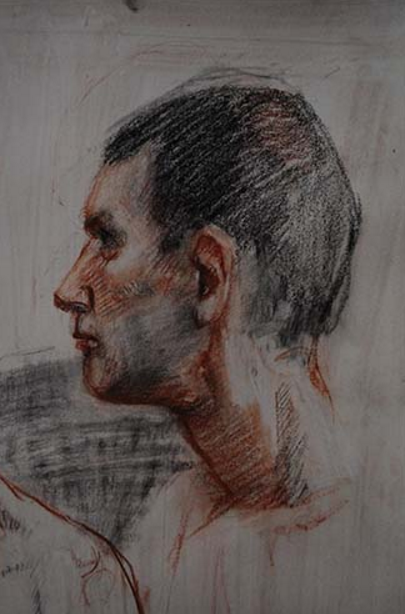
Paintings by Paul White also should be highlighted. The artist is interested in particular pieces of the popular culture and focuses on such aspects as decay and impact of time (“Paul White.” par. 1.). The one that is shown here is especially fascinating and maybe analyzed (“Roadside Car Stack”).
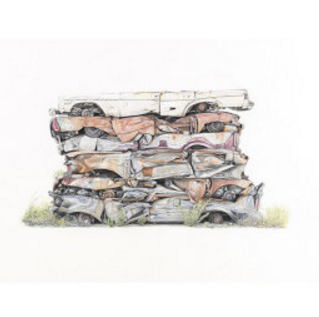
One of the biggest benefits of this exhibition is that it is incredibly versatile, and particular limitations are not present. Individuals that have visited it already have voiced their approval and it was praised by critics. It is possible to state that there is no particular unifying theme in this exhibit as a whole, but every artist has provided works that are quite similar and in the same style.
I think that children will be engaged in this case and would have an enormous interest in this exhibition because many kinds of art are shown and every individual may select a work that he or she likes. The fact that some of the works are moving is also worth noting, and it would help students to keep their attention and not get distracted. Children like unique works and they will be able to see many in this case. Moreover, the fact all of the pieces were created by Australian authors is also beneficial and would make them much more motivated. They will be able to appreciate all kinds of artwork and may start to think about the meaning behind such pieces (Russell-Bowie 148).
Also, many children prefer works that were created with tools other than a brush and paint, and it would be interesting to see their reaction in some cases. It may be useful to ask students about techniques that authors utilized, and it may lead to discussions (Aland and Darby 31). Furthermore, I think that it is critical to ask their opinions about the exhibition to get a better understanding of which aspects they liked and which ones they did not (Dinham 55). The fact that a worksheet has been developed and will be provided is also worth mentioning, and it would make students much more interested in the process.
Worksheetfor students visiting the exhibition
Find this piece by Jane Theau. It is rather interesting, and it may not be an easy task to understand what the author wanted to express. It is possible to state that this work is rather abstract, but it is possible to identify a hidden meaning. The author is known for criticizing particular aspects of society that can be quite problematic in some cases. The artist can see beautiful things in various aspects of our lives, and it makes her pieces rather unique and worthy of a discussion (“Tethered”).
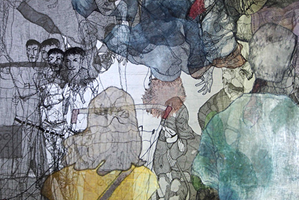
- Try to explain what is so special about this work. Did you see anything similar before?
- Select a character that you like the most and describe him or her. What they are doing in this situation and what they are thinking about.
- The author utilized many approaches during the process of creation of this piece. Try to explain why it is visually appealing and list colours that you think draw the most attention.
Find this piece by Todd Fuller. The author utilizes animation to ensure that the audience has a better understanding of stories of these characters (“Todd Fuller” par. 1). Try to ask other people in the gallery if they know anything about the background of this work, and why it is so important. It can be seen that the author thinks that small details are critical, and they make the piece much more comprehensive and impressive at the same time (“Little Star”).
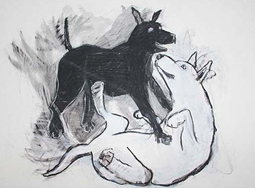
- Which dog do you like the most and why?
- What do you think about animation, and do you think that it helps to enhance the story?
- Would you like to see a continuation? What adventures await these dogs in your opinion?
- Try to draw the one which you like more on a separate piece of paper.
Find this piece by John Bokor. The author has received numerous awards, and many of his works were met with acclaim (“John Bokor” par. 1). He utilizes many techniques to ensure that every single of his paintings is unique and can be differentiated from others. It can be seen that he is not focused on such aspects as perfection and prefers to devote more attention to other factors that would help to make his works intriguing (“Morning Interior”).
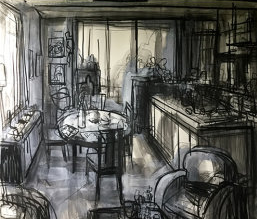
- What do you think about the room? What has happened recently? Please provide a list of objects that you are able to identify in this case. Which one is the most interesting?
- How many members do you think are in this family? Are there any children?
- Try to draw a similar chair on a separate piece of paper and try to keep the proportions. Ask other people around you what they think about this picture. List words mentioned by other individuals the most.
- Many types of art can be seen throughout the whole exhibition. Artists are very devoted to their craft and want to ensure that others will be able to see them. Please write about the one that you liked the most and explain what you liked about it. What techniques did the author utilize to make it? What would you paint if you had an opportunity to show your work at this exhibition?
Lesson Plans
An artwork based upon the artmaking activity covered in the lessons
This piece is titled «A Rare Vase» and it is rather straightforward. I have used a lead pencil, a ruler, A4 paper, and an eraser. I thought that this is an appropriate work in this case because it is relatively simple, and it is not likely that children will have any significant difficulties when drawing similar objects. Moreover, individuals may add details to make the piece as unique as it is possible and they will be able to demonstrate their creativity.
However, it may not be an easy task to make both sides proportional, and it is imperative to focus on this aspect when explaining the technique to students. Also, some may struggle when drawing edges, and it is paramount to show children how it can be done much easier. SSome will likelywill have issues with some perspectives, and it would be beneficial to explain how objects should be drawn in volume. Drawing of shadows is an aspect that can be quite problematic most of the time, and it may be necessary to provide other examples to show how it can be done. It is possible to identify that the work is not yet finished, and it needs to be refined (“A Rare Vase: Middle of the Development”).
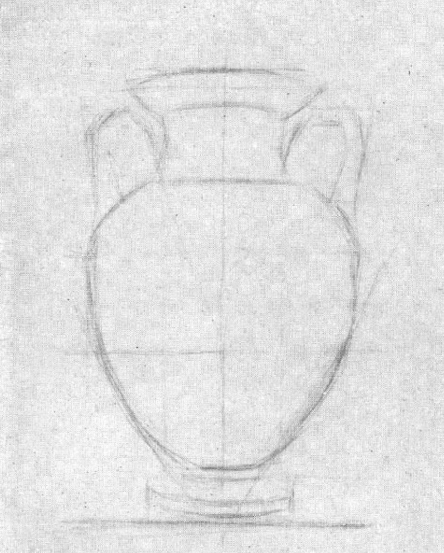
It can be seen that this piece can be simple to draw but it has many details that make it visually appealing, and it will be able to attract the audience (“A Rare Vase: Completed Version”).
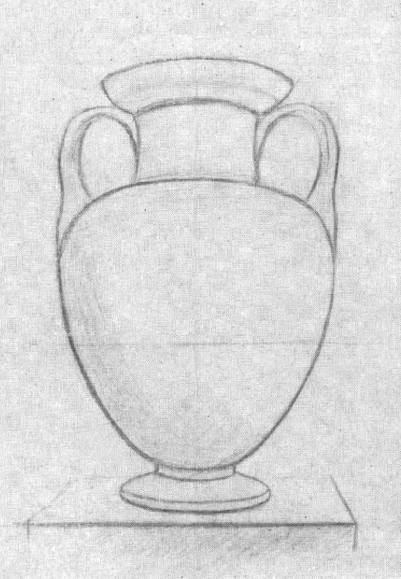
Works Cited
Aland, Jenny, and Max Darby. Art Connections. Melbourne, AU: Heinemann, 1991. Print.
Clements, Robert D., and Frank Wachowiak. Emphasis Art: A Qualitative Art Program for Elementary and Middle Schools. 9th ed. Boston, MA: Allyn & Bacon, 2010. Print.
Dinham, Judith. Delivering Authentic Arts Education: Visual Arts, Drama, Music, Dance, Media. South Melbourne, AU: Cengage Learning, 2011. Print.
“Head of a Man” n.d. Web.
“John Bokor.” Just-Draw. Just-Draw, n.d. Web.
“Little Star” n.d. Web.
“Morning Interior” n.d. Web.
“Paul White.” Just-Draw. Just-Draw, n.d. Web.
“Roadside Car Stack” n.d. Web.
Russell-Bowie, Deirdre. MMADD About the Arts: An Introduction to Primary Arts Education. Frenchs Forest, AU: Prentice Hall, 2005. Print.
“Tethered” n.d. Web.
“Todd Fuller.” Just-Draw. Just-Draw, n.d. Web.
Woolfe, Lisa. “Just Draw: An Exhibition of Contemporary Australian Drawing.” NAVA. 2016. Web.